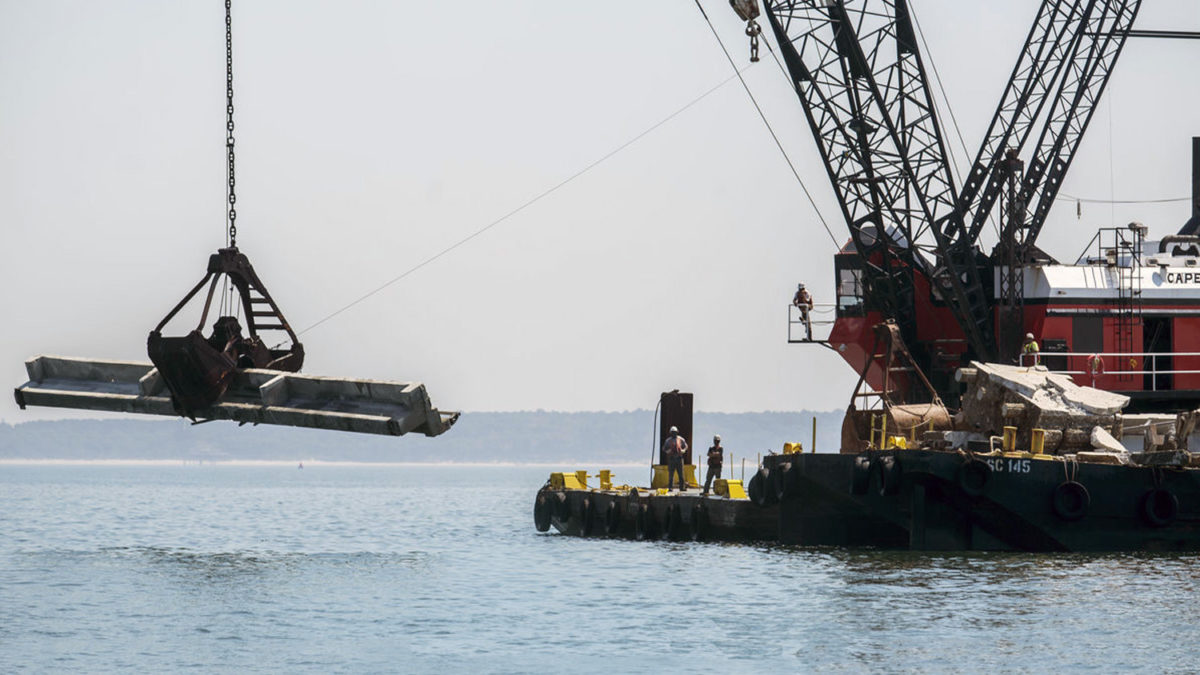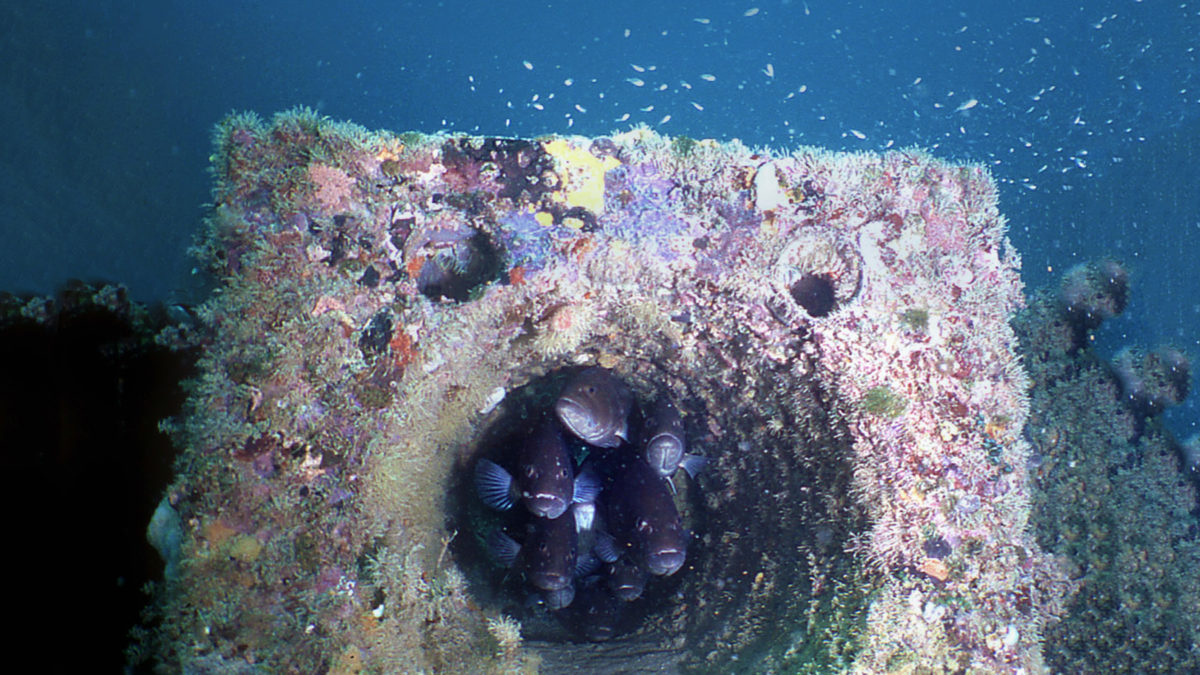From Bridge to Reef: Repurposing Concrete for the Marine Environment

Much has been made of the new Lesner Bridge with its emphasis on multimodal transit and its key role in the Hampton Roads transportation network – and while the new bridge is impressive, the old bridge is getting a new lease on life as it plays an important role in our ocean ecosystem.
Up to 20,000 tons of concrete from the old Lesner Bridge structure will find new purpose as part of the Chesapeake Bay artificial reef program, where it will create appealing new habitats for reef dwelling fish and attract other ocean creatures. As part of the reef known as the Cabbage Patch, the addition of these materials will further enhance an already popular fishing site and support the diversity of ocean life in the Chesapeake Bay. The Virginia Marine Resources Commission worked with the City of Virginia Beach and McLean Contracting to secure concrete from the old bridge as a donation to the artificial reef.
Primarily constructed to provide better fish habitats, artificial reefs have both environmental and economic impact as they rehabilitate stressed natural habitats and provide opportunities for recreational fishing and diving. In addition to serving as shelter and feeding ground for reef dwelling fish, artificial reefs in turn attract larger predator fish as well as other organisms that act as a food supply for various marine species.

Alicia Nelson, the artificial reef coordinator for the Virginia Marine Resources Commission, notes that creating new fish habitats is good for the fish and the ocean, as well as benefitting the public and replenishing populations for sport fishermen. While the artificial reef program in Virginia relies on materials donations to expand its more than 23 artificial reefs, they are highly selective and assess each donation to ensure no potentially toxic finishes or materials are on the concrete being used to expand an artificial reef.
Sustainable choices have a greater ripple effect, too. In this case, the old Lesner Bridge doesn’t just create new ocean habitat and repurpose construction material – its donation also minimizes the waste going to landfills and salvage yards, which in turn saves fuel involved with transport.
Additionally, some components of the old bridge are finding new purpose as research tools. The girders – parts of the bridge that support it from the bottom – will be sent to Virginia Tech for testing to evaluate the amount of weight the old bridge could have withstood in its deteriorated state. This information will be critically helpful in bridge repair and replacement efforts in the Hampton Roads region for the many other bridges constructed similarly and around the same time.
While the new bridge will safely facilitate the flow of vehicle, bicycle, and pedestrian traffic over the Lynnhaven Inlet, the old bridge will take on new meaning as a source for recreational fishing and environmental rejuvenation.
About the Lesner Bridge project
We have been honored to be part of the design team with FIGG Bridge Engineers, Inc. on this high profile project in the Hampton Roads area. The new Lesner Bridge was designed with substantial public involvement and is a striking, multimodal connector that is an asset to our community. To learn more, please see The Making of A Signature Bridge.
Top photo by Bill Tiernan: Workers lower a large piece of the old Lesner Bridge into the Chesapeake Bay near Kiptopeke to create an artificial reef. Middle image courtesy University of Florida: Grouper utiliza artificial reef structures off of the Dixie Coast in Florida.